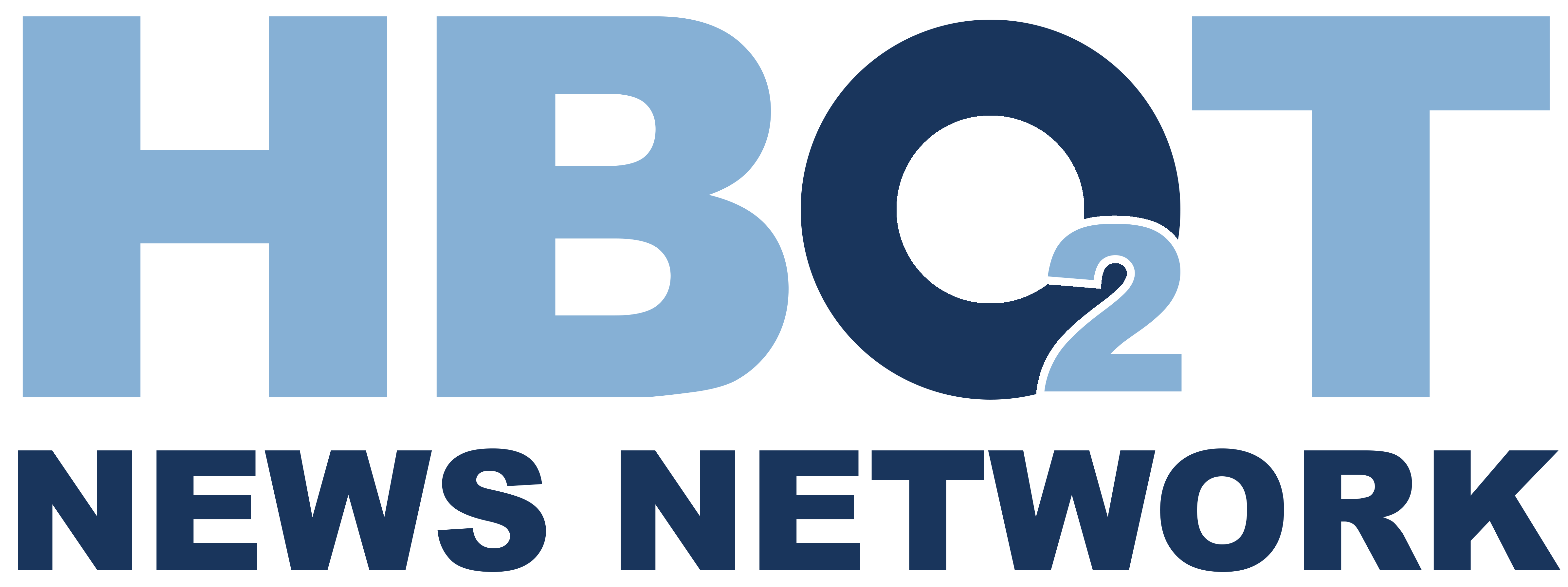This report is a product of the VA Evidence-based Synthesis Program. The purpose is to provide “timely and accurate syntheses of targeted healthcare topics. to improve the health and healthcare of Veterans”. The authors have made a comprehensive search and analysis of the literature and make recommendations to assist clinicians in dealing with veterans suffering from either traumatic brain injury (TBI) or post-traumatic stress disorder (PTSD). The report is timely and of great potential impact given the vigorous and lengthy debate among hyperbaric physicians and lay people determined to find an answer for the large numbers of veterans deeply affected with some combination of PTSD and post-concussion dysfunction.
HYPERBARIC OXYGEN THERAPY- BASICS AND NEW APPLICATIONS
Hyperbaric oxygen therapy (HBOT) serves as primary or adjunctive therapy for a diverse range of medical conditions. The indication for HBOT can be related to either pressure (decompression sickness or air emboli) or tissue hypoxia. It is now realized, that the combined action of hyperoxia and hyperbaric pressure, leads to significant improvement in tissue oxygenation while targeting both oxygen and pressure sensitive genes, resulting in improved mitochondrial metabolism with anti-apoptotic and anti-inflammatory effects. Clinical studies published in recent year’s present convincing evidence that HBOT can be the coveted neurotherapeutic method for brain repair. Here we discuss the multi-faceted role of HBOT in wound care in general and in neurotherapeutics in detail.
The protection effect and mechanism of hyperbaric oxygen therapy in rat brain with traumatic injury.
To investigate the effect of hyperbaric oxygen therapy (HBOT) on traumatic brain injury (TBI) outcome. The modified Marmarou’s weight drop device was used to generate non-lethal moderate TBI rat model, and further developed in vitro astrocytes culturing system. Then, we analyzed the expression changes of interested genes and protein by quantitative PCR and western blot. Multiple HBO treatments significantly reduced the expression of apoptosis promoting genes, such as c-fos, c-jun, Bax and weakened the activation of Caspase-3 in model rats. On the contrary, HBOT alleviated the decrease of anti-apoptosis gene Bcl-2 and promoted the expression of neurotrophic factors (NTFs), such as NGF, BDNF, GDNF and NT-3 in vivo. As a consequent, the neuropathogenesis was remarkably relied with HBOT.
Case control study: hyperbaric oxygen treatment of mild traumatic brain injury persistent post-concussion syndrome and post-traumatic stress disorder.
Mild traumatic brain injury (TBI) persistent post-concussion syndrome (PPCS) and post-traumatic stress disorder (PTSD) are epidemic in United States Iraq and Afghanistan War veterans. Treatment of the combined diagnoses is limited. The aim of this study is to assess safety, feasibility, and effectiveness of hyperbaric oxygen treatments (HBOT) for mild TBI PPCS and PTSD. Thirty military subjects aged 18-65 with PPCS with or without PTSD and from one or more blast-induced mild-moderate traumatic brain injuries that were a minimum of 1 year old and occurred after 9/11/2001 were studied. The measures included symptom lists, physical exam, neuropsychological and psychological testing on 29 subjects (1 dropout) and SPECT brain imaging pre and post HBOT.
Increased circulating stem cells and better cognitive performance in traumatic brain injury subjects following hyperbaric oxygen therapy.
Traumatic brain injury (TBI) may cause persistent cognitive dysfunction. A pilot clinical study was performed to determine if hyperbaric oxygen (HBO₂) treatment improves cognitive performance. It was hypothesized that stem cells, mobilized by HBO₂ treatment, are recruited to repair damaged neuronal tissue. This hypothesis was tested by measuring the relative abundance of stem cells in peripheral blood and cognitive performance during this clinical trial. The subject population consisted of 28 subjects with persistent cognitive impairment caused by mild to moderate TBI suffered during military deployment to Iraq or Afghanistan. Fluorescence-activated cell sorting (FACS) analysis was performed for stem cell markers in peripheral blood and correlated with variables resulting from standard tests of cognitive performance and post-traumatic stress disorder: ImPACT, BrainCheckers and PCL-M test results. HBO₂ treatment correlated with stem cell mobilization as well as increased cognitive performance. Together these results support the hypothesis that stem cell mobilization may be required for cognitive improvement in this population.
Review of recent non-hyperbaric oxygen interventions for mild traumatic brain injury.
Traumatic brain injury (TBI) affects 3.2 to 5.3 million persons in the United States (U.S.), and the impact in the U.S. military is proportionally higher. Consensus is lacking regarding an accepted outcome to measure the effectiveness of interventions to improve the symptoms associated with TBI, and no standard-of-care treatment exists for mild TBI (mTBI). A recent literature review evaluated hyperbaric oxygen therapy (HBO₂) interventions, and findings were mixed. We conducted a systematic review of non-HBO₂ mTBI interventional trials published in 2005-2015 in military and civilian populations. A total of 154 abstracts, seven randomized controlled trials (RCTs) and five pilot studies were reviewed. RCTs were evaluated using Consolidated Standards of Reporting Trials criteria. Results indicated that studies published within the period of review were small pilot studies for rehabilitation therapy and motion capture or virtual reality gaming interventions. Neuropsychological assessments were commonly specified outcomes, and most studies included a combination of symptom and neuropsychological assessments. Findings indicated a lack of large-scale, well-controlled trials to address the symptoms and sequelae of this condition, but results of small exploratory studies show evidence of potentially promising interventions.
Sleep assessments for a mild traumatic brain injury trial in a military population.
Baseline sleep characteristics were explored for 71 U.S. military service members with mild traumatic brain injury (mTBI) enrolled in a post-concussive syndrome clinical trial. The Pittsburgh Sleep Quality Index (PSQI), sleep diary, several disorder-specific questionnaires, actigraphy and polysomnographic nap were collected. Almost all (97%) reported ongoing sleep problems. The mean global PSQI score was 13.5 (SD=3.8) and 87% met insomnia criteria. Sleep maintenance efficiency was 79.1% for PSQI, 82.7% for sleep diary and 90.5% for actigraphy; total sleep time was 288, 302 and 400 minutes, respectively. There was no correlation between actigraphy and subjective questionnaires. Overall, 70% met hypersomnia conditions, 70% were at high risk for obstructive sleep apnea (OSA), 32% were symptomatic for restless legs syndrome, and 6% reported cataplexy. Nearly half (44%) reported coexisting insomnia, hypersomnia and high OSA risk. Participants with post-traumatic stress disorder (PTSD) had higher PSQI scores and increased OSA risk. Older participants and those with higher aggression, anxiety or depression also had increased OSA risk. The results confirm poor sleep quality in mTBI with insomnia, hypersomnia, and OSA risk higher than previously reported, and imply sleep disorders in mTBI may be underdiagnosed or exacerbated by comorbid PTSD.
Linear analysis of heart rate variability in post-concussive syndrome.
Heart rate variability (HRV) represents measurable output of coordinated structural and functional systems within the body and brain. Both mild traumatic brain injury (mTBI) and HRV are modulated by changes in autonomic nervous system function. We present baseline HRV results from an ongoing mTBI clinical trial. HRV was assessed via 24-hour ambulatory electrocardiography; recordings were segmented by physiological state (sleep, wakefulness, exercise, standing still). Time, frequency, and spatial domain measures were summarized and compared with symptoms, sleep quality, and neurological examination. Median low frequency/high frequency (LF/HF) ratio exceeded 1.0 across segments, indicating prevalence of sympathetic modulation. Abnormal Sharpened Romberg Test was associated with 29% LF/HF decrease (95% CI [2.1, 47.7], p=0.04); pathological nystagmus associated with decreased standard deviation of electrocardiogram R-R interval (SDNN) index (25% decrease, 95% CI [0.8, 43.4], p=0.04). Increased sympathetic modulation was associated with increased anger scores (19% LF/HF increase with 5-point State Trait Anger Expression Inventory-2 trait anger increase (95% CI [1.2, 39.1], p=0.04)). A 13% HF increase (95% CI [2.1, 25.7], p=0.02) was observed with increased Pittsburgh Sleep Quality Index scores. These results support autonomic nervous system dysfunction in service members after mTBI.
Baseline EEG abnormalities in mild traumatic brain injury from the BIMA study.
The Brain Injury and Mechanisms of Action of HBO₂ for Persistent Post-Concussive Symptoms after Mild Traumatic Brain Injury (BIMA), sponsored by the Department of Defense, is a randomized, double-blind, sham-controlled trial of hyperbaric oxygen (HBO₂) in service members with persistent post-concussive symptoms following mild TBI, undergoing comprehensive assessments. The clinical EEG was assessed by neurologists for slow wave activity, ictal/interictal epileptiform abnormalities, and background periodic discharges. There is scant literature about EEG findings in this population, so we report baseline clinical EEG results and explore associations with other evaluations, including demographics, medication, neurological assessments, and clinical MRI outcomes. Seventy-one participants were enrolled: median age 32 years, 99% male, 49% comorbid PTSD, 28% with mTBI in the previous year, 32% blast injuries only, and 73% multiple injuries. All participants reported medication use (mean medications = 8, SD = 5). Slowing was present in 39%: generalized 37%, localized 8%, both 6%. No other abnormalities were identified. Slowing was not significantly associated with demographics, medication or neurological evaluation. Participants without EEG abnormalities paradoxically had significantly higher number of white matter hyperintensities as identified on MRI (p = 0.003). EEG slowing is present in more than one-third of participants in this study without evidence of associations with demographics, medications or neurological findings.
Neuropsychological assessments in a hyperbaric trial of post-concussive symptoms.
Results of studies addressing the effect of mild traumatic brain injury (mTBI) and post-traumatic stress disorder (PTSD) on symptoms and neuropsychological assessments are mixed regarding cognitive deficits in these populations. Neuropsychological assessments were compared between U.S. military service members with mTBI only (n=36) vs. those with mTBI÷ PTSD (n=35) from a randomized interventional study of mTBI participants with persistent post-concussive symptoms (PCS). The mTBI group endorsed worse symptoms than published norms on PCS, PTSD and pain scales (⟩50% abnormal on Neurobehavioral Symptom Inventory (NSI), PTSD Checklist-Civilian, McGill Pain Questionnaire-Short Form) and some quality of life domains. Worse symptom reporting was found in the mTBI÷ PTSD group compared to mTBI (e.g., mean NSI total score in mTBI 27.5 (SD=12.7), mTBI÷ PTSD 39.9 (SD=13.6), p⟨0.001). The mTBI÷PTSD group performed worse than mTBI on the Weschler Adult Intelligence Scale digit span (mean difference -1.5, 95% CI[-2.9,-0.1], p=0.04) and symbol search (mean difference -1.5, 95% CI[-2.7,-0.2], p=0.03) and Grooved Pegboard (dominant hand mean difference -7.0, 95% CI[-11.5,-2.4], p=0.003; non-dominant mean difference -9.8, 95% CI[-14.9,-4.7], p⟨0.001). Differences were detected in ANAM simple reaction time (p=0.04) and mathematical processing (p=0.03) but not verbal fluency or visuospatial memory assessments. Results indicate increased symptom severity and some cognitive deficits in mTBI÷ PTSD compared to mTBI alone.

